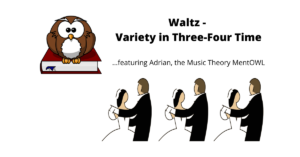Parlando is the rap of classical music. It is a vocal technique that stands between singing and speaking and is not so easy to do. This style is especially popular in opera. Read here what parlando is and how you can recognize it.
What you will read in this article:
Parlando: a definition
The word parlando is Italian and means “speaking”. Strange – in opera there is singing, isn’t there? Wouldn’t it be spoken theater otherwise?
That’s right – in opera there is mainly singing, although there are certain forms of musical theater in which sung and spoken passages alternate (for example, in Singspiel).
In music, however, parlando does not mean a spoken passage, but a certain way of singing that is similar to speaking. It is, so to speak, the rap of classical music 😊
Parlando is fast, clearly articulated, light, and rhythmically accurate singing similar to speaking.
Definition of Parlando
Four ingredients for a good parlando
So now you know what is meant by parlando in opera. But how do you recognize a parlando when you hear it? In other words, what does an opera singer have to do to produce it?
There are four aspects that must come together for this to happen. I call them the four ingredients for a good parlando:
1) Speed
The first ingredient concerns tempo. The tempo of a passage must be reasonably fast. In other words, there is no such thing as a slow parlando, because that would be equivalent to “normal” speech.
This naturally raises the question of what “reasonably fast” means. In fact, this is not clearly defined, because not everyone draws the line between “ordinary” opera singing and parlando at the same point. You will read more about this later in this article when we look at two examples.

2) Clarity
The second ingredient comes from the area of articulation. The musical passage must be articulated clearly, which you can tell in opera by understanding the text. Good opera singers pay attention to text intelligibility.
Intermediate conclusion: If you hear a (very) fast passage in an opera and you can still understand the text well, it is most likely a parlando.

3) Lightness
The third ingredient concerns vocal technique. After all, it would be possible to sing quickly and clearly, but to “press” with the voice in such a way that the passage sounds heavy and ponderous. That would not be a parlando.
A parlando must seem lively, light and effortless. “Seem” is the magic word, because a parlando is not easy for the opera singer. You can recognize good opera singers by the fact that you don’t notice the technical difficulties these professionals have to overcome.
By the way, some Fächer (certain types of voices) are virtually predestined for this technique. Usually these are the Fächer that take on funny or tragicomic operatic roles, for example the buffo bass. Perhaps this is because the text is so well understood in parlando – after all, that is crucial in a “joke” intended to lighten the mood in the opera.

4) Accuracy
The fourth ingredient comes from the area of rhythm. A convincing parlando can only be achieved if the rhythm is precisely maintained.
There must be no sloppiness here! Rhythmic precision is perhaps even the most important ingredient, because if it is ignored, it is hardly possible to perform a passage quickly, clearly and lightly. Thus, disregarding rhythmic accuracy drags down the other three ingredients.

Parlando or no parlando, that is the question
Now you know the ingredients for a good parlando. But do you also recognize it when you hear it? That is not so easy, because the boundaries between this technique and “ordinary” singing can be fluid. I would like to show you this with two examples.
Parlando - yes or no? (1)
Watch the aria of Monostatos from Mozart’s Magic Flute:
Let’s go through the ingredients:
First, the tempo is appropriately fast, although there are other interpretations of this aria that are much faster (Do you wonder what Mozart himself would have said about this tempo? You’ll get an idea here). Second, Uwe Peper, who plays Monostatos in this video, articulates cleanly and clearly. Third, there’s nothing to complain about Uwe Peper’s perfect vocal technique either, which makes for exemplary text comprehension. And fourth, Uwe Peper adheres precisely to Mozart’s notated rhythm.
All the ingredients I named above are present. But does this example really come close enough to speaking to be called a parlando?
One has to deal with such “unclean” definitions and examples in music again and again. Music is not like physics or mathematics, but an art form. To art always belongs room for interpretation.
Therefore, you can only decide for yourself whether Monostatos’ aria is already a parlando for you or not yet. Conductors, singers and directors have to make such decisions for every piece, because the interpretation is influenced by the decision.
Parlando - yes or no? (2)
Another example, this time from the operetta. In Die Fledermaus by Johann Strauss, Gabriel Eisenstein is furious with his lawyer:
Let’s go through the parlando recipe again:
The tempo is fast and Thomas Allen, the Eisenstein in this video, articulates with exemplary clarity. Moreover, Thomas Allen convinces with both his lightness of voice and his rhythmic precision.
Again, all the ingredients are present. But is it a parlando? You know: interpretation. There are arguments for and against, from which a fruitful discussion can arise – for example in the next opera break

Jonathan Stark – Conductor
Hello! I'm Jonathan Stark. As a conductor, it is important to me that visits to concerts and operas leave a lasting impression on the audience. Background knowledge helps to achieve this. That's why I blog here about key works of classical music, about composers, about opera and much more that happens in the exciting world of music.








